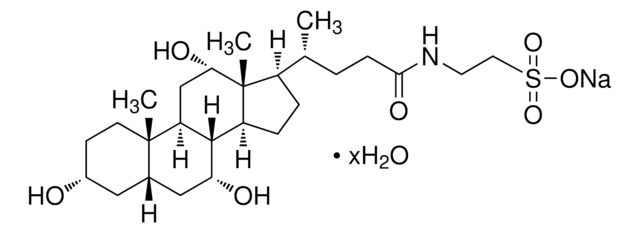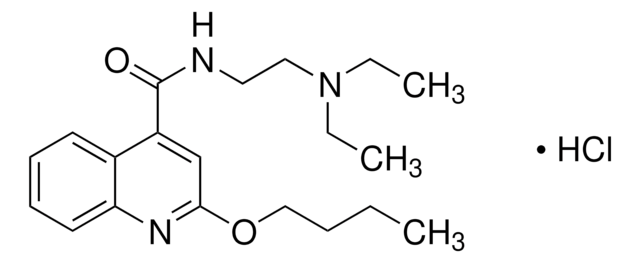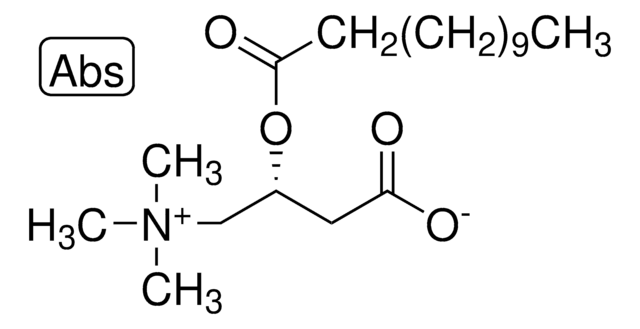C4151
Sodium decanoate
≥98%
Synonym(s):
Capric acid sodium salt, Decanoic acid sodium salt, Sodium caprate
About This Item
Recommended Products
biological source
natural (organic)
Assay
≥98%
form
powder
functional group
ester
lipid type
saturated FAs
shipped in
ambient
storage temp.
2-8°C
SMILES string
[Na+].CCCCCCCCCC([O-])=O
InChI
1S/C10H20O2.Na/c1-2-3-4-5-6-7-8-9-10(11)12;/h2-9H2,1H3,(H,11,12);/q;+1/p-1
InChI key
FIWQZURFGYXCEO-UHFFFAOYSA-M
Looking for similar products? Visit Product Comparison Guide
Related Categories
Application
- Neonatal intestinal mucus barrier changes in response to maturity, inflammation, and sodium decanoate supplementation.: This study elucidates how sodium decanoate affects neonatal intestinal barriers, indicating its potential for nutritional interventions to enhance mucosal immunity and gastrointestinal health (Ronholt et al., 2024).
- Effects of Sodium Salts of Fatty Acids and Their Derivatives on Skin Permeation of Cromolyn Sodium.: Demonstrates the role of sodium decanoate in enhancing skin permeability, offering insights into its applications in transdermal drug delivery systems (Dinh et al., 2023).
- The Role of Paracellular Transport in the Intestinal Absorption and Biopharmaceutical Characterization of Minoxidil.: Highlights sodium decanoate′s impact on the intestinal absorption mechanisms, contributing to the development of more effective oral drug formulations (Dahan et al., 2022).
- Control of Escherichia coli Serotype O157:H7 Motility and Biofilm Formation by Salicylate and Decanoate: MarA/SoxS/Rob and pchE Interactions.: Investigates how sodium decanoate influences bacterial behavior, particularly in managing pathogenicity and biofilm control, which is crucial for both clinical and environmental applications (Ream et al., 2022).
- Sodium Decanoate Improves Intestinal Epithelial Barrier and Antioxidation via Activating G Protein-Coupled Receptor-43.: This research explores sodium decanoate′s therapeutic potential in strengthening intestinal barriers and enhancing antioxidative properties, making it a candidate for gastroenterological treatments (Ma et al., 2021).
Storage Class Code
11 - Combustible Solids
WGK
WGK 3
Flash Point(F)
Not applicable
Flash Point(C)
Not applicable
Personal Protective Equipment
Certificates of Analysis (COA)
Search for Certificates of Analysis (COA) by entering the products Lot/Batch Number. Lot and Batch Numbers can be found on a product’s label following the words ‘Lot’ or ‘Batch’.
Already Own This Product?
Find documentation for the products that you have recently purchased in the Document Library.
Customers Also Viewed
Our team of scientists has experience in all areas of research including Life Science, Material Science, Chemical Synthesis, Chromatography, Analytical and many others.
Contact Technical Service











